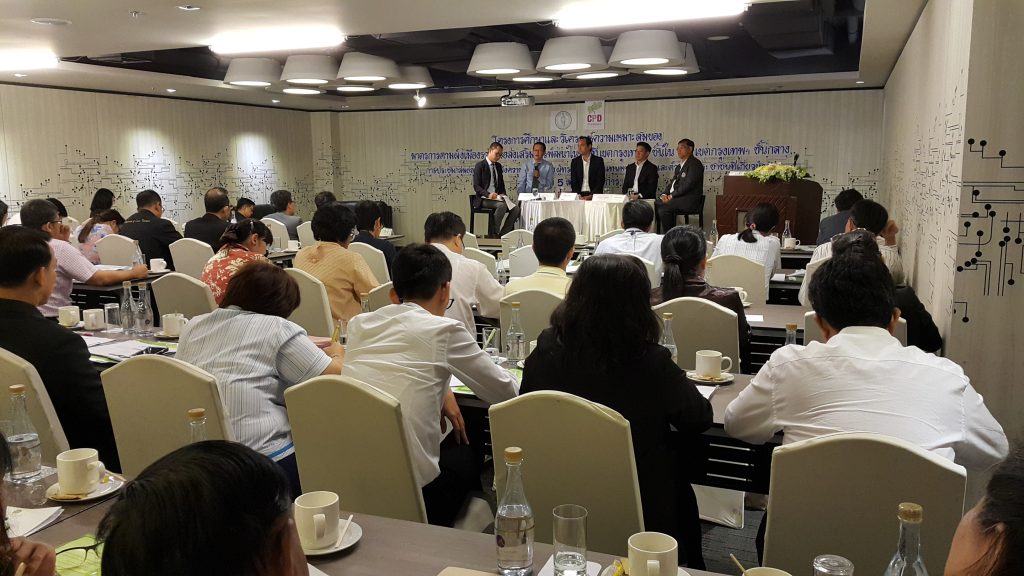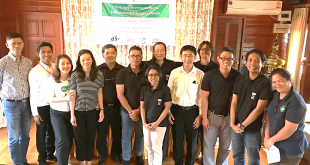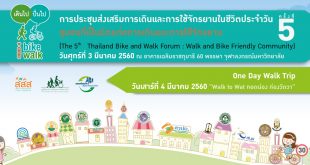Walking and cycling are integrated into town planning of Bangkok

On Thursday 25th August 2016, Thailand Cycling Club (TCC) was invited by Town Planning Office of the Bangkok Metropolitan Administration (BMA) to attend a public hearing on suitability of using town planning for development of the inner zone and middle zone of Bangkok. The meeting reached a number of conclusions in favour of walking and cycling promotion in Thailand’s capital city.
Firstly, it was agreed that transport around electric train stations, especially by walking and cycling, would be more promoted as a standard for town planning.
Secondly, areas in the inner zone and middle zone of Bangkok, such as those around Silom Road (business district), Sanam Luang (the Royal Ground), Yaowaraj (China Town), Bang Sue (rail transport hub), Din Daeng (residential area), Bangkok Yai (residential area) and Ratburana (residential and industrial area), for example, would be promoted each as ‘compact city’, meaning that each area would have all facilities necessary for everyday living, allowing people living and/or working in each of these areas not to have to travel far and can travel comfortably in short distance by walking and cycling.
Thirdly, footpaths should be well maintained and protected to reduce traffic jams/problems caused by people having to walk on streets, which seems to imply footpaths are much occupied by small traders.
Fourthly, plans would be developed in response to major changes in the future, such as city that is friendly to elderly people, and city that is resilient to deal with increasing natural disasters caused by climate change.
It is clear that there would be increasing number of elderly people, who cannot walk as agile as young people, in Bangkok (and any city). The elderly cannot easily walk up and down uneven surface. If the city is not made easy for the elderly to walk around, they cannot leave home and in practice become ‘disabled persons’.
As for being a resilient city, there are clear evidences that when a city is hardly hit by earthquake, infrastructure would be seriously damaged – roads are blocked or crumbled, no fuel and electricity supply. Motorized vehicles are useless. Walking and cycling are the only mean of working transport; where bicycle can’t be ridden, it can still be pushed or led. This is also the case with flood.
It is also clear that walking and cycling as non-motorized transport do not emit greenhouse gas and polluted gas, and therefore do not contribute to climate change. More walking and cycling are now attracting increasing number of city/country administrators to promote as a mean of daily transport to replace uses of motorized vehicles for short distance.
Advocacy for bikeways and/or walkways is a good, actually very good, cause if it is not road by road. It would be very slow for Bangkok to become a ‘bike city’ because it has hundreds of road. A better way is to advocate integration of walking and cycling into town planning and city’s transport system which is covering the whole city.
So integration of walking and cycling into town planning of Bangkok and any city in Thailand is a major success, an progress to be celebrated for us all.
 ชมรมจักรยานเพื่อสุขภาพแห่งประเทศไทย ชมรมจักรยานเพื่อสุขภาพแห่งประเทศไทย
ชมรมจักรยานเพื่อสุขภาพแห่งประเทศไทย ชมรมจักรยานเพื่อสุขภาพแห่งประเทศไทย


